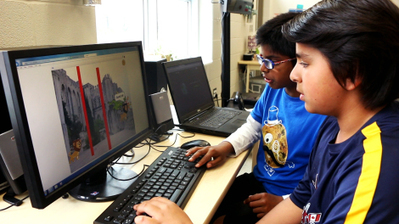As our technologies have rapidly developed and manipulating those technologies has emerged as a key college- and career-ready skill, teaching students how to program, question, and manipulate digital devices has become commonplace in our schools. But coding is the application of learning. Before students can effectively perform these tasks, they must understand the concepts behind that application.
Computational Thinking is the prerequisite skill for understanding the technologies of the future. It is a thought process, rather than a specific body of knowledge about a device or language. Computational thinking is often associated with computers and coding, but it is important to note that it can be taught without a device.
For that reason, computational thinking can be a part of any classroom, including the classrooms of our youngest learners in the primary grades. And, I would argue, it is quickly becoming a necessary foundational skill for students. By explicitly teaching, and allowing space for the development of, computational thinking, teachers can ensure that their young students are learning to think in a way that will allow them to access and understand their digital world. Teaching computational thinking, in short, primes students for future success. Furthermore, it can be integrated into existing routines and curricula.
Via John Evans



 Your new post is loading...
Your new post is loading...








